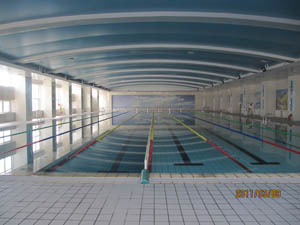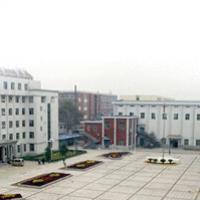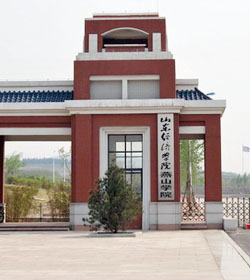2011年英语四级考试机考样题(word版)
2016-02-16 05:54:17pmBand 4
The test consists of 3 sections with different types of tasks to test your abilities of English listening speaking writing and reading.It will take approximately 2 hours to complete.
Sample Test
Section A Listening Comprehension (Questions 1-18; 25-30 minutes)
Directions: This section contains 18 multiple choice questions based on four audio and one video clips. You should select the best answer to each question. All audio and video clips will be played twice. When they are played for the first time you should pay attention to the main idea and answer some general comprehension questions. When they are played for the second time you should focus on the important details and answer some specific comprehension questions.
News Item 1 Question 1 will be based on the following news item.
GLOSSARY
1. apprehensive 恐惧的,担心的
2. trajectory 轨道,弹道
3. stumble 蹒跚而行,踉跄
4. collaborate 合作,协作
Question 1
What is the main topic of the news report?
A. China’s economic output has exceeded that of the U. S.
B. China has emerged as a global economic powerhouse.
C. Chinese economic expansion should be welcomed.
D. China’s economic growth helps the U.S. to finance its growing debt.
Now listen again and answer Question 2.
Question 2
2. What did Treasury Secretary Paulson say about China’s economic growth in the conference call with reporters?
A. Americans feel threatened by China’s economic growth.
B. The growing Chinese economy contributes to the U.S. economy.
C. The loss of American manufacturing jobs overseas is caused by China’s economic growth.
D. China has problems in its economic development.
News Item 2 Question 3 will be based on the following news item.
GLOSSARY
1. hazardous 危险的
2. thoroughfare 大道,大街
3. respiratory 呼吸的
4. asthma 哮喘(病)
5. emphysema.肺气肿
Question 3
3. What’s the main idea of this report?
A. Severe air pollution in Southern California caused serious health problems in children.
B. Increasing numbers of children develop asthma due to annoying air pollution.
C. Air regulations concerning housing development should be adjusted.
D. Highway air pollution constitutes a threat to children’s lungs.
Now listen again and answer Question 4.
Question 4
4. What is the main reason for the researchers to be concerned about the health of those children as adults?
A. In adulthood their lung capacity was far weaker than in those ordinary kids.
B. Generally speaking their lung stops to develop in adulthood .
C. Adulthood respiratory problems are likely to lead to other illnesses.
D. These children are under double effecting of air pollution.
News Item 3 Question 5 will be based on the following news item.
GLOSSARY
1. gadget 小器具,小装置
2. craze 狂热,风行一时的东西
3. dampener 潮湿器,增加潮湿物
4. gray market 半合法市场
5. handset 电话听筒,手持机
6. shrug sth. off不把当回事 对满不在乎
Question 5
5. What is the general response to Apple’s iPhone?
A. People are really excited.
B. It falls short of expectations.
C. The cost is too high.
D. It is hugely impressive.
Now listen again and answer Question 6.
Question 6
6. Why didn’t the company Airtel think that the price is an important factor?
A. The iPhones’ target consumers are the successful and the young.
B. People can get full benefits such as guarantee if they buy here in India.
C. The iPhone is an impressive combination of music and video player cellphone and web browser.
D. India is a big market with huge demand.
News Item 4 Questions 7 to 8 will be based on the following radio interview.
GLOSSARY
1. airborne (飞机或乘客)升空
2. transceivers 无线电收发两用机
3. cockpit 驾驶舱,驾驶座
4. simultaneous 同时的
5. roaming 漫游的
6. backlash 强烈抵制,集体反对
7. etiquette 礼节,礼仪,规矩
8. Lufthansa (德国)汉莎公司
9. premium 高昂的,优质的
10. fantastically 极其地
11. protocol (数据传递的)协议
Question 7
7. What does the anchor tell us about flights in the EU?
A. Laptops and MP3 players are not allowed until after a certain altitude.
B. Passengers can make calls using the phones on board the plane.
C. Flights within the EU are more talkative.
D. Mobile phones can only be turned on after the plane is airborne.
Question 8
8. How did the airliners feel about the regulation?
A. Lufthansa has made it clear that they won’t allow the internet on board.
B. Most airliners don’t think it necessary to use phones during the flight.
C. Ryan Air is currently uncertain about whether to accept it or not.
D. Airliners in general have respective views.
Now listen again and answer Questions 9 to 12.
Question 9
9. What is vital to safe use of mobile phones aboard an airplane?
A. Mobile phone signals are separated from these sent to the airplane by a base station.
B. Stronger signals sent to mobile phones won’t interfere with the technology on board.
C. The whole airplane with a transceiver linked to a satellite functions as a base station.
D. Mobile phones switched on don’t search for signals when one boards a flight.
Question 10
10. What is likely to be the pricing?
A. It is normal roaming charges.
B. It’s 4 to 8 dollars per email.
C. It is a couple of dollars for an SMS message.
D. It is around 3 dollars per minute for voice calls.
Question 11
11. Which of the following statements is not true of passengers’ reactions?
A. Some are thrilled to be able to send SMS messages.
B. Those traveling short distances don’t like voice calls.
C. There is considerable opposition as some prefer peace on a flight.
D. Introduction of in-flight phone etiquette is highly desirable.
Question 12
12. Why was the Internet service no longer available on board?
A. It was technologically unfeasible.
B. It was a business failure.
C. Passengers decline to surf the net.
D. The net speeds aboard are beyond expectation.
News Item 5
Questions 13 to 14 will be based on the following video clip.
GLOSSARY
1. Cathedral 教区总教堂,大教堂
2. premier 首要的,最著名的
3. ragpicker 拾荒者
4. huddle (因寒冷或害怕)挤作一团
5. rickety 不结实的,摇摇晃晃的
6. upscale 高档的,高级的
7. avant-garde 前卫派,前卫派的
8. sandals 凉鞋
9. sift through区分,挑选
10. detergent 洗涤剂
11. grimy 满是污垢的,肮脏的
12. boutique 时装店,精品店
13. slum 贫民窟
14. Baroque 巴洛克风格的
Question 13
13. What is the main topic of this TV program?
A. Bagselling.
B. Ragpicking.
C. Waste recycling.
D. Pollution.
Question 14
14. What probably is the mission of Converse?
A. To reduce pollution.
B. To manufacture upscale products.
C. To help ragpickers rebuild life.
D. To reuse trash materials.
Now listen again and answer Questions 15 to 18.
Question 15
15. From the program it can be learned that_________
A. There is increasing pollution in India.
B. India is the world’s third largest consumer.
C. Poor people are benefiting from ragpicking.
D. Living condition is improving in India .
Question 16
16. What is the response to their bags?
A. They are far too expensive.
B. They are immensely popular.
C. They are of usual styles.
D. They are comparatively fashionable.
Question 17
17. What was the situation like when the Ahujas first started out?
A. There were just 300 workers.
B. The workers were well trained.
C. The business seemed unpromising
D. People were interested in their work.
Question 18
18. How do ragpickers feel about the Converse’s project?
A. They are glad their life quality is improved via the project.
B. They are surprised the bags are all highly priced.
C. They are hopeful that it will continue.
D. They are complaining because of the low pay.
Section B Listening-based Integrated Tasks (Questions 19-48; 45-50 minutes)
Directions: This section contains four tasks based on the previous recordings.
Task 1 Listening and Dictation (Questions 19-28; 8 minutes)
Directions: In this section you will hear a clip twice. As you listen to it for the first time fill in the blanks with the exact words you have heard. Check what you have written down while you listen to it for the second time. You will have 30 seconds to check.
Now fashion is the name of the game there in Austria but you might be surprised to learn that some of the most Q19______________ come from one of the most Q20____________ of sources. Satinder Bindra has been finding out.
A cold start to ragpicker Shankar’s workday. He huddles for Q21____________ by this fire. Then after a simple breakfast of hot milk and toast he Q22______________ in his rickety cart to keep his first Q23_______________ of the morning.
Just a short distance away Rika Hababi is already at work busy collecting hundreds of such discarded and soiled plastic bags. It’s backbreaking work but there’s no shortage of these Q24 _________________ of plastic.
Within an Q25 ________________ growing at almost 8 percent a year India now consumes 5 million tons of plastic a year and will soon become the world’s third largest consumer after the United States and China. But with growth comes increasing Q26 _____________ . Ragpickers have traditionally helped recycle a lot of this material. But now a Q27________________ nonprofit organization called Conserve has Q28________________ a new idea.
Task 2 Use of Grammar and Structure (Questions 29-38; 5 minutes)
Directions: There are ten blanks in the following passage. For each blank there are four choices. You are required to choose the ONE that fits best into the context.
Q29 ____________ the time being though everybody’s focusing on the present; these workers carefully sift through Rika and Shankar’s load of plastic. Then the bags are cut by another group of workers; some of them so poor that before this job they Q30 ___________ never used a Q31____________ of scissors and had to be specially trained to do so. Q32 _______________ the bags are cut they’re vigorously hand-washed in detergent. After they are aired and dried out they are once again sorted and stacked into these colorful heaps.
The plastic is then compressed and heated; and since this technology is still in the process Q33________________ we can't film it. But take a look at this: the rebirth of hundreds of thousands of grimy and soiled plastic bags into eye-catching sheets. These sheets are then stitched into bags belts bracelets and shoes by trained craftsmen. Watching and supervising the entire operation are Anita and Shalabh Ahuja the founders of Converse. From just a few workers Q34 _______________ they first started out two-and-a-half years ago the Ahujas now hire 300 people. They promote from within the organization and plow everything they earn back into the business.
For me it's a humbling experience that I don’t know why it’s fallen on me to do that. But I’m so glad that I had been able to contribute towards improving the lots of a Q35 ________________ bit of people.
Shalabh Ahuja is an engineer. He’s responsible Q36 ________________ the technical end of operations. His wife Anita is an artist Q37 ________________ who’s designed all these handbags. The Ahujas now annually export such bags Q38 ________________$150000 across the world; a far cry from their earlier days when Anita says it was hard to get people interested in her work.
29. A. of B. at C. for D. in
30. A. have never B. had never C. never D. never did
31. A. pair B. set C. piece D. couple
32. A. When B. While C. Once D. As
33. A. patented B. to be patented C. being patented D. of being patented
34. A. when B. whom C. which D. that
35. A. little B. few C. much D. whole
36. A. as B. to C. in D. for
37. A. one B. the one C. another one D. the other one
38. A. worth B. worthy C. worth of D. worthy of
Task 3 Listening and Repeating (Questions 39 to 48; 8 minutes)
Directions: There are ten sentences selected from Section A. You will hear each sentence twice.
39. The last decade has seen China emerge as a global economic powerhouse.
40. …we cannot solve climate issues without cooperation and engagement with China.
41. … lung capacity in these children was far weaker…
42. The study was over a 13-year period…
43. But there was no sign of people queuing up for hours.
44. India is one of the biggest markets for mobile handsets
45. he is a travel editor for The Independent Newspaper.
46. it’s going to interfere with the technology on board.
47. Connection by Boeing was an enterprise set up as the division
48. it technologically worked quite well but commercially was never a success.
Task 4 Listening and Writing (Question 49; 30 minutes)
Directions: In this section you are required to write an essay of no less than 120 words.
Now watch the video again before you start writing.
1. Write a short summary of the video; please include in your summary:
1) the major problem with India;
2) what the Ahujas have done;
2. Give your suggestion as to how to reduce pollution in Beijing.
Section C Reading Comprehension (Questions 50-69; 35 minutes)
Task 1 In-depth Reading (Questions 50-59; 20 minutes)
Directions: There are two passages in this section. Each passage is followed by some questions or unfinished statements. There are four choices for each question and you should decide on the best choice.
Passage 1
Questions 50 to 54 are based on the following passage.
As the twentieth century began the importance of formal education in the United States increased. The frontier had mostly disappeared and by 1910 most Americans lived in towns and cities. Industrialization and the diversification of economic life combined with a new emphasis upon qualifications and expertise to make schooling increasingly important for economic and social mobility. Increasingly too schools were viewed as the most important means of integrating immigrants into American society.
The arrival of a great wave of southern and eastern European immigrants at the turn of the century coincided with and contributed to an enormous expansion of formal schooling. By 1920 schooling to age fourteen or beyond was compulsory in most states and the school year was greatly lengthened. Kindergartens vacation schools extracurricular activities and vocational education and counseling extended the influence of public schools over the lives of students many of whom in the larger industrial cities were the children of immigrants. Classes for adult immigrants were sponsored by public schools corporations unions churches settlement houses and other agencies.
Reformers early in the twentieth century suggested that education programs should suit the needs of specific populations. Immigrant women were one such population. Schools tried to educate young women so they could occupy productive places in the urban industrial economy and one place many educators considered appropriate for women was the home. Although looking after the house and family was familiar to immigrant women American education gave homemaking a new definition. In pre-industrial economies homemaking had meant the production as well as the consumption of goods and it commonly included income-producing activities both inside and outside the home in the highly industrialized early-twentieth-century United States however overproduction rather than shortage was becoming a problem. Thus the ideal American homemaker was viewed as a consumer rather than a producer. Schools trained women to be consumer homemakers cooking shopping decorating and caring for children "efficiently" in their own homes or if economic necessity demanded as employees in the homes of others.
Subsequent reforms have made these notions seem quite out-of-date.
50. It can be inferred from paragraph 1 that one important factor in the increasing importance of education in the United States was____________
(A) the growing number of schools in frontier communities
(B) an increase in the number of trained teachers
(C) the expanding economic problems of schools
(D) the increased urbanization of the entire country
51. The phrase "coincided with" in line 8 is closest in meaning to____________
(A) was influenced by
(B) happened at the same time as
(C) began to grow rapidly
(D) ensured the success of
52. According to the passage one important change in United States education by the 1920's was that_____________
(A) most places required children to attend school
(B) the amount of time spent on formal education was limited
(C) new regulations were imposed on nontraditional education
(D) adults and children studied in the same classes
53. Vacation schools and extracurricular activities are mentioned in lines 12 to illustrate_______________
(A) alternatives to formal education provided by public schools
(B) the importance of educational changes
(C) activities that competed to attract new immigrants to their programs.
(D) the increased impact of public schools on students.
54. According to the passage early-twentieth century education reformers believed that_______________
(A) different groups needed different kinds of education
(B) special programs should be set up in frontier communities to modernize them
(C) corporations and other organizations damaged educational progress
(D) more women should be involved in education and industry
Passage 2
Questions 55 to 59 are based on the following passage.
According to sociologists there are several different ways in which a person may become recognized as the leader of a social group in the United States. In the family traditional cultural patterns place leadership on one or both of the parents. In other cases such as friendship groups one or more persons may gradually emerge as leaders although there is no formal process of selection. In larger groups leaders are usually chosen formally through election or recruitment (招募).
Although leaders are often thought to be people with unusual personal ability decades of research have failed to produce consistent evidence that there is any category of “natural leaders.” It seems that there is no set of personal qualities that all leaders have in common; rather virtually any person may be recognized as a leader if the person has qualities that meet the needs of that particular group.
Furthermore although it is commonly supposed that social groups have a single leader research suggests that there are typically two different leadership roles that are held by different individuals. Instrumental leadership is leadership that emphasizes the completion of tasks by a social group. Group members look to instrumental leaders to “get things done.” Expressive leadership on the other hand is leadership that emphasizes the collective well-beings of a social group’s members. Expressive leaders are less concerned with the overall goals of the group than with providing emotional support to group members and attempting to minimize tension and conflict among them. Group members expect expressive leaders to maintain stable relationships within the group and provide support to individual members.
Instrumental leaders are likely to have a rather secondary relationship to other group members. They give others and may discipline group members who inhibit attainment of the group’s goals. Expressive leaders cultivate a more personal or primary relationship to others in the group. They offer sympathy when someone experiences difficulties or is subjected to discipline are quick to lighten a serious moment with humor and try to resolve issues that threaten to divide the group. As the difference in these two roles suggest expressive leaders generally receive more personal affection from group members; instrumental leaders if they are successful in promoting group goals may enjoy a more distant respect.
55. What does the passage mainly discuss?
(A) The problems faced by leaders.
(B) How leadership differs in small and large groups.
(C) How social groups determine who will lead them.
(D) The role of leaders in social groups.
56. The passage mentions all of the following ways by which people can become leaders EXCEPT ___________.
(A) recruitment
(B) formal election process
(C) specific leadership training
(D) traditional cultural patterns
57. In mentioning “natural leaders” in line 9 the author is making the point that __________.
(A) few people qualify as “natural leaders”.
(B) there is no proof that “natural leaders” exist.
(C) “natural leaders” are easily accepted by the members of a group.
(D) “natural leaders” share a similar set of characteristics.
58. The word “resolve” in line 27 is closest in meaning to _____________.
(A) avoid repeating
(B) talk about
(C) avoid thinking about
(D) find a solution for
59. The passage indicates that instrumental leaders generally focus on ___________.
(A) ensuring harmonious relationships.
(B) sharing responsibility with group members.
(C) identifying new leaders.
(D) achieving a goal.
Task 2 Skimming and Scanning (Questions 60-69; 15 minutes)
Directions: You have 15 minutes to go over the passage and answer questions 60 to 69. For questions 60 to 66 choose the best answer from the choices marked A) B) C) and D). For questions 67 to 69 comple the sentences with the information given in the passage.
推荐文章
猜你喜欢
附近的人在看
推荐阅读
拓展阅读
院校推荐
猜你喜欢
勇往直前
溪流有了波折,才有了美丽的浪花
四川农业大学2017考研初试成绩复查办法参考
中科院广州化学研究所2017考研成绩公布通知一览
南京邮电大学2017考研成绩复查办法荐读
中国矿业大学2017考研成绩复查办法参考
南京工业大学2017考研成绩查询时间及复查安排出炉
南京邮电大学2017考研成绩查询通知
福建省2017考研成绩将于2月15日后出炉
江苏省2017考研成绩将于2月15日15点发布
2017考研调剂信息:中国舰船研究设计中心(701所)
2017考研调剂公告参考:中国船舶及海洋工程设计研究院
北京交通大学2017年MBA调剂信息一览
2017华北电力大学(保定)数理系考研调剂公告
西华大学人文学院2017接收考研调剂研究生公告发布
中国矿业大学2017考研成绩查询时间出炉
西华大学经济学院2017年考研调剂公告发布
中国测绘科学研究院2017年考研调剂公告一览



